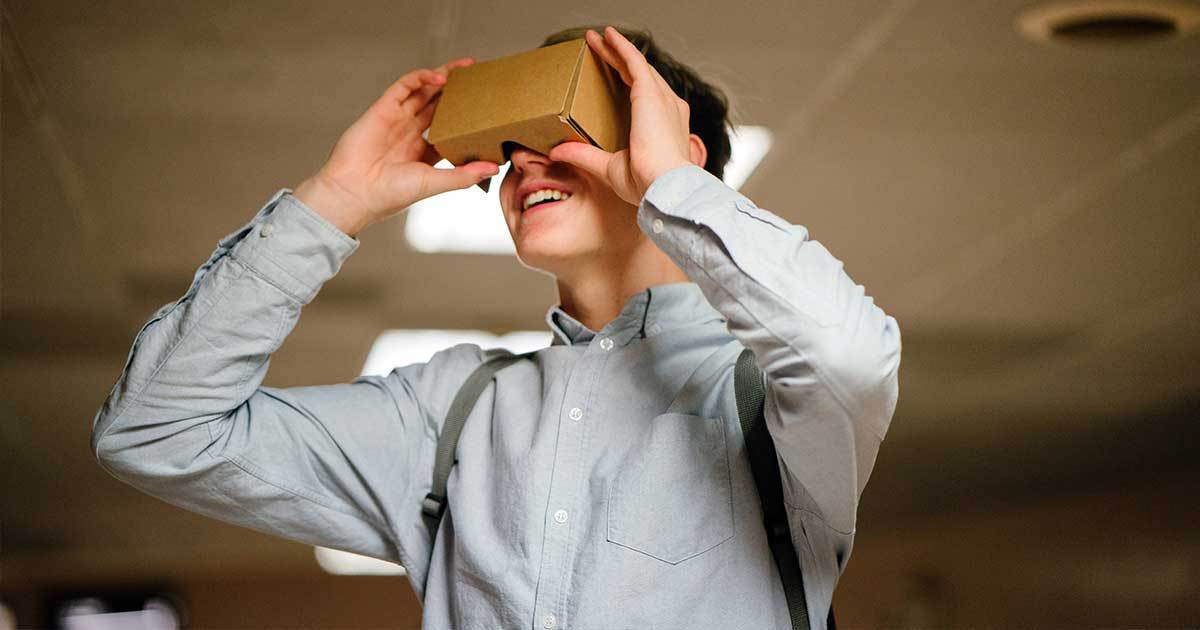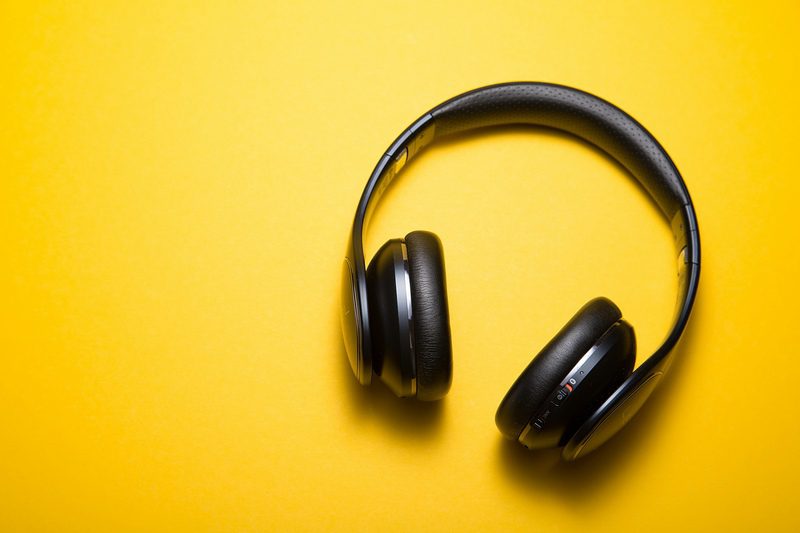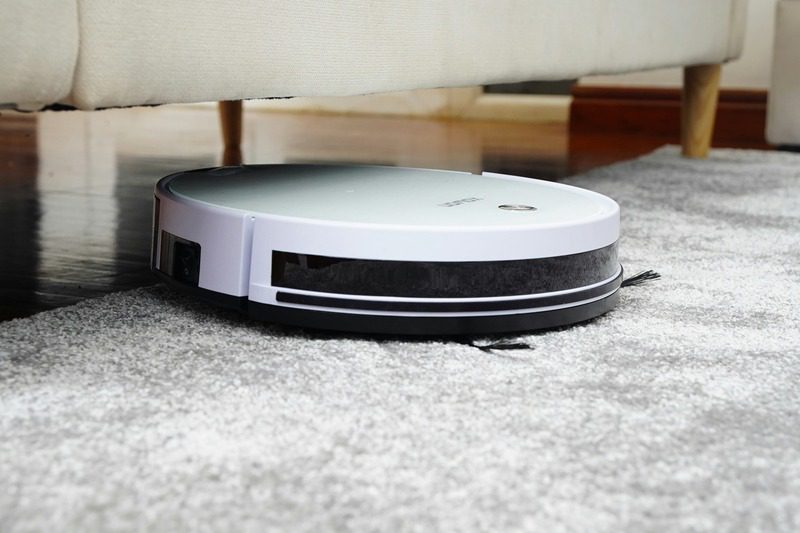Technology
VR Work Lowers Productivity According to Study
Published
2 years agoon

While many think the metaverse is the future, a recent study has proven otherwise. As a matter of fact, a research team found out that VR work resulted in more anxiety, an unpleasant working condition, and migraines.
A research team from the Coburg University in Germany released their findings that show quite the opposite of what metaverse advocates believe it to be. While Microsoft and Facebook’s Meta are making huge investments in virtual reality, the workforce isn’t ready yet for the switch.
The widespread use of virtual reality and the immersive virtual world of the metaverse have caused lower productivity and well-being. Also, it increases anxiety while lowering a worker’s comfort and well-being, the study says.
The Research
The study was published in a paper with the title “Quantifying the Effects of Working in VR for One Week.” The research team gathered ten men and 16 women as test subjects. They were asked to work in VR for one week using basic desktop setups. They were made to use the Oculus Quest 2 VR headsets.
The study was set for one week. And the participants were made to work for the whole duration with 45-minute lunch breaks. Several times during the day, they were asked to grade the experience working in VR. They were also asked to compare it with working in a real-world office.
The study used ten statistics, including perceived productivity, well-being, frustration, and anxiety. They were also asked specific VR-related questions, such as if they were feeling sick or if their eyes started hurting. The research team also monitored their heartbeats and typing speeds.
The Results
The results were surprising. They found out that the participants said they felt they had more work to do when working in VR as compared to when they were in a regular office. The 14% drop in self-described productivity was worth noting. Plus, the workers’ “frustration” increased by more than 40% compared to baseline.
All these findings led to the conclusion that there is indeed a decrease in the workers’ mental well-being. And as expected, the participants suffered from an increase in visual fatigue, eye strain, nausea, and migraines. These were the results of spending a considerable amount of time in VR.
Furthermore, two participants had to drop out of the study because of frequent migraines and high levels of disorientation, frustration, and nausea. All this happened on the very first day of the study.
The Research Team’s Conclusion
After finding out that VR work lowers productivity, the research team made it clear that the study is one among the many in a relatively new field. They reiterated that one of the main goals of the research was to provide relevant data that future researchers can build on. They are aiming to help with investigations into this topic in the years to come.
There are also some people who are inclined to believe that the negative results were due to the hardware or software that the research team used. They are pertaining to the Chrome Remote Desktop and the off-the-shelf budget VR headsets, to name a few.
The paper went on to explain that the researchers purposely used average technology, citing their closer relation to what the average desktop users would have. They claim that if the future is that everyone is on the metaverse, it should be open to people of all budgets. It isn’t exclusive to those with budgets for $3,000 PCVR setups.
The research team also proceeded with the conclusion of their study: it helps lay the groundwork for future research and emphasizes the weak points while determining the potential opportunities for the improvement of working in VR. They are hoping that this will encourage further studies and the investigation for longer-term productive work in situ in VR.
You may like

If you haven’t found the right gaming headphones, you’re probably not searching in the right places. Better yet, you probably don’t know how to choose one. Your gaming headphones must have excellent quality, comfortable, reliable connectivity, and multiple features. Here are the 10 best gaming headphones of 2024.
1. SteelSeries Arctis Pro

The SteelSeries Arctis Pro Wireless offers outstanding high-fidelity sound quality and a premium build. It provides the ability to connect to a console and mobile device simultaneously. The headset features an excellent microphone that filters noise and a comfortable design. Despite low wireless latency, it has limited noise isolation. The unique battery charging system enhances gaming sessions. Drawback: no dedicated microphone volume button.
2. HyperX Cloud II

This headset features low latency and balanced audio quality, including virtual surround sound. Its noise-filtering microphone is clear, and the comfortable ear cups allow for extended gaming sessions. However, the lack of software customization and breathability can lead to warm ears. Pros include good sound and comfort, but cons involve poor noise isolation and potential sound sharpness.
3. Razer BlackShark V2

Deemed as one of the top gaming headsets, the Razer BlackShark V2 provides excellent sound isolation, comfort, and high-quality sound. It delivers more accurate audio than most gaming headsets and can be worn for hours without overheating. Its downsides include an average microphone and cumbersome Synapse software.
4. Corsair Virtuoso RGB Wireless SE

Looking for a premium gaming headset? The Corsair Virtuoso Wireless SE is a premium gaming headset offering excellent wireless connectivity, superb sound, and customizable RGB lighting. It features a high-quality microphone, long battery life, and a sturdy build. While it delivers a compelling package, its higher price, and potential heat build-up during long sessions may be drawbacks.
5. Logitech G Pro X

The Logitech G Pro X gaming headset offers professional-grade sound and Blue Voice microphone technology for clear communication. While it excels on PC with its comfortable design and extensive sound customization, its reliance on software hampers performance on consoles. The headset features multiple wired connectivity options, but the microphone may underemphasize bass.
6. Beyerdynamic MMX 150

Nothing beats this headset’s superior audio quality and comfortable design, making it an excellent choice for audiophile gamers. It features many replaceable parts and strong fundamentals, although it is best used with a wired USB connection. Despite its solid construction, the headset may be expensive, given its features and limited button functionality with a 3.5mm adapter.
7. EPOS H6PRO

The Epos H6Pro is a versatile mid-range gaming headset with exceptional audio quality and an ergonomic design. It offers a clear, punchy sound and a crystal-clear microphone. Compatibility with all systems makes it convenient, and users can choose between open or closed-back variants. The open version leaks audio, and the mic splitter can be inconvenient.
8. Astro A50

The fourth generation of the Astro A50 is a premium wireless gaming headset that offers an immersive experience with Dolby Audio. The headset features a low-latency wireless base station and a comfortable design for long gaming sessions. Its boom mic provides excellent recording quality and effective noise isolation. Onboard controls allow for volume adjustments and other settings, though occasional issues exist with the companion software. The headset’s open soundstage is a strength, but its noise isolation is lacking.
9. Audeze Mobius

The Audeze Mobius is known for its planar magnetic drivers and 3D audio technology, offering a distinctive listening experience. While it comes at a higher price, its exceptional audio quality and multiple connectivity options make it a top choice for gaming enthusiasts. The headset supports 7.1, stereo, and Bluetooth modes, and the 3D audio works well. However, the price may be a drawback, and the memory foam takes time to adapt for comfort.
10. Sennheiser GSP 670

Buying this headset offers superb sound quality, comfort, and a dependable wireless connection, all in one package. Despite its high price, it delivers top-notch audio and a good microphone. The headset is ideal for gamers seeking a premium wireless experience and remote workers needing an all-day option. However, the connection range can be inconsistent.
For more tech and gaming recs, check out more here at Owner’s Mag!

Getting a reliable robot vacuum means you can lay around on your couch while the cleaner does the heavy lifting! Our team searched high and low for the best robot vacuum, and we can say we enjoyed testing them! Here are our top 10 picks for the robot vacuums of 2024.
1. iRobot Roomba j7+

The Roomba j7+ is the best robot vacuum overall. It features self-emptying capabilities, intelligent navigation, and an easy-to-use app. Despite being loud and having average battery life, it recognizes up to 80 household objects, ensuring your home gets cleaned while avoiding cords and shoes. PrecisionVision Navigation and the P.O.O.P. guarantee add to its appeal.
Price:
- $642.80 on Amazon
2. iRobot Roomba s9+

We all agree that this is the best robot vacuum for pet hair. It features a D-shaped design for corner cleaning, exceptional suction power, and an auto-empty base. Though expensive and with average battery life, it offers 40 times power-lifting suction, 30% wider dual multi-surface rubber brushes, and Dirt Detect technology for tackling excessive pet hair and dirt.
Price:
- $899.99 on Amazon
3. Eufy S1 Pro

If you’re looking for a robot vacuum with powerful suction, look no further. The Eufy S1 Pro boasts an 8,000PA suction and self-washing mop head for unparalleled cleaning efficiency. Intelligent mapping ensures precision, while speed and effectiveness set it apart. Despite being expensive and loud, its cutting-edge self-cleaning technology and power make it a top-tier choice.
Price:
- $999 on Kickstarter
4. Shark ION AV751

If you need a robot vacuum on a tight budget, the Shark ION AV751 is for you. This robot vacuum offers excellent suction power and a 120-minute run time. Its tri-brush system and stair/cliff edge detection make it efficient. Alexa and Google Assistant integration adds convenience, making it a manageable option for those seeking simplicity.
Price:
- $319.99 on Amazon
5. Neato Botvac D8

The Neato D8, known for its D-shaped design, excels in corner cleaning and advanced mapping. Ideal for smaller homes, it offers 100-minute battery life and a lidar for space mapping. The app supports no-go zones and scheduling, though it can’t map multiple floors and may climb low furniture and ledges.
Price:
- $699.99 on Amazon
6. Bobsweep PetHair Vision

Designed for pet owners, this vacuum excels at pet hair removal and offers smart navigation and mopping capabilities. Its quiet operation and three-inch height allow easy cleaning under furniture. With longer battery life, it efficiently covers large areas. The drawback? Its cleaning schedule may reset unexpectedly, and customer service follow-through can be slow.
Price:
- $399.99 on Amazon
7. Dreame X30 Ultra

This best 2-in-1 vacuum and mop offers quiet, self-emptying, dual oscillating mop heads and MopExtend mop pads. Although it has an app that’s not very user-friendly and is expensive with recurring costs, it provides comprehensive cleaning of all surfaces. Its multi-functional base station and 8300PA suction power ensure efficient home maintenance.
Price:
- $1,399.99 on Amazon
8. Samsung Jet Bot AI+

If you don’t mind the bulky size, the Samsung Jet Bot AI+ is a good robot vacuum option. Its self-cleaning base adds convenience. This robot vacuum has an attractive design and advanced AI for obstacle avoidance.
Price:
- $899.99 on Amazon
9. Dyson 360 Heurist

The Dyson 360 Heurist offers exceptional cleaning power with solid suction and intelligent mapping. This premium robot vacuum reaches edges effectively, thanks to its motorized brush. Though slow to set up, its precise map fine-tuning and methodical cleaning make it a top choice.
Price:
- $399.99 on Amazon
10. Roborock S8 Pro Ultra

Nothing is more self-sufficient than this all-in-one robot vacuum. It’s self-cleaning, self-emptying, self-washing, self-drying, and self-refilling! Plus, it uses VibraRise mopping and customizable cleaning routines.
Price:
$949.99 on Amazon
Technology
Can AI Chatbots Become Your Therapist?
Published
2 weeks agoon
April 28, 2024By
Skylar Lee
Mental health chatbots have become reliable companions for those who can’t afford therapy. However, these chatbots aren’t a real replacement for actual therapists. They can provide temporary comfort and aid mental health professionals in tracking patients’ moods and other necessary information to provide quality care. But with AI being more accessible and free, especially to teens, will more people depend on AI chatbots in the future?
The Latest in AI Chatbot & Mental Health

Mental health chatbots are on the rise. Wysa and Woebot are two well-known examples. But, one AI chatbot is much more popular than the others: the Psychologist bot on Character.ai. According to the BBC, Character.ai helps millions of users talk to the bot and other mental health-related ones to address any concerns.
Character.ai allows users to create bots to help others talk to their favorite characters or “individuals.” So far, the Psychologist and other mental health-adjacent bots have received millions of messages from multiple users. Character.ai users have shared their reviews on the social media forum Reddit about their experiences with the bot. So far, the bot has received nothing but amazing reviews.
For instance, one user messaged Psychologist to help with relationship issues and to communicate with their partner.
There’s one person to thank for this: Blazeman98. He hoped to help others because he wanted someone to talk to when his friends weren’t available. But this isn’t the only AI chatbot internet users can approach for their mental health concerns.
Other Mental Health Chatbots
Woebot is one well-known mental health chatbot. The team behind the chatbot uses cognitive behavioral techniques to help users talk about their feelings, and the chatbot will respond with compassion. Plus, it can give simple solutions to get you through the moment. It covers multiple mental health issues like needs, feeling capable, relationships, coping, and more. The chatbot helps adults, adolescents, and mothers. You can download Woebot in the App Store or Google Play Store.
If you have anxiety, depression, borderline personality disorders, and other mental health concerns, you can download Youper. This chatbot helps you track your moods every day. Plus, you can chat with the bot anytime you need help.
Wysa is another option to consider if you want an alternative to Character.ai. However, Wysa is ideal for businesses prioritizing mental health in the workplace. The chatbot helps the patient talk about what’s worrying them. Plus, it checks in with the patient and suggests exercises to improve their well-being. However, Wysa can connect patients to professionals.
Addressing Loneliness
Since AI chatbots don’t have any certification or accreditation to give advice or provide counseling, AI chatbots are excellent companions for lonely people. Meta-Gallup reports that a quarter of the global population feels lonely. With the rise of AI, more people can rely on AI to talk to them and provide companionship that others can’t offer, whether in real life or on the internet.
However, Business Insider writer Daniel Cox believes that more people will be lonely as they talk to AI often. It’s all because of the lack of human connection. Gen Z, in particular, will feel this loneliness even more so. Since they grew up with technology, talking to chatbots is a pathway for them when they need someone to talk to when they don’t have anyone else or because of the potential harm social media brings to users.
How Safe is it to Use AI Chatbots?

Although you can talk to an AI chatbot with the touch of a button, it could be risky to depend on an AI chatbot for mental health-related issues or companionship.
One issue that arises when talking to AI chatbots is your privacy. One recent example of a data leak comes from Microsoft when an employee unknowingly leaked 38TB (that’s right, terabytes) of data. That’s a possibility, especially if data isn’t stored properly. Or, in the employee’s case, they posted the wrong URL.
Another issue that comes up is bias and discrimination. For instance, one chatbot was taken down for the language it used while conversing with users on Twitter. Due to the unfortunate incident, it was forced to shut down because of an uncoordinated attack.
The chatbots mentioned above ensure safety and security through data encryption. Plus, they use language that won’t trigger or encourage users to harm themselves or someone else. Additionally, chatbots avoid giving diagnoses and aren’t discriminatory or biased. Moreover, some AI chatbots are HIPAA-compliant, ensuring they follow regulatory health standards. Finally, the chatbots won’t sell your data to third-party or advertising companies.
Final Thoughts
AI chatbots can be a companion when you’re lonely or need to discuss mental health conditions or symptoms. However, they are not a full replacement for a human therapist as they can only provide solutions to help you get through the moment, track your moods, and give you insights.
Character.ai provides a free solution to talk to a “Psychologist” bot anytime, but note that you’re not talking to a professional. If that’s bothersome for you, you can use other mental health chatbots to direct you to the help you need. This way, you’ll also have a safe and secure experience while conversing with chatbots built by professionals.

10 Best Gaming Headphones of 2024

Top 10 Gaming Chairs of 2024

10 Best Fitness Equipment of 2024

10 Best Robot Vacuums of 2024

Llama 3’s Image Generator: The Secret Sauce for Design Success?

TikTok Is Toast: Get the Secret Weapon Brands are Using to Power Through

Can AI Chatbots Become Your Therapist?

TikTok Is Toast: Get the Secret Weapon Brands are Using to Power Through

Llama 3’s Image Generator: The Secret Sauce for Design Success?

10 Best Robot Vacuums of 2024

10 Best Fitness Equipment of 2024

Top 10 Gaming Chairs of 2024




